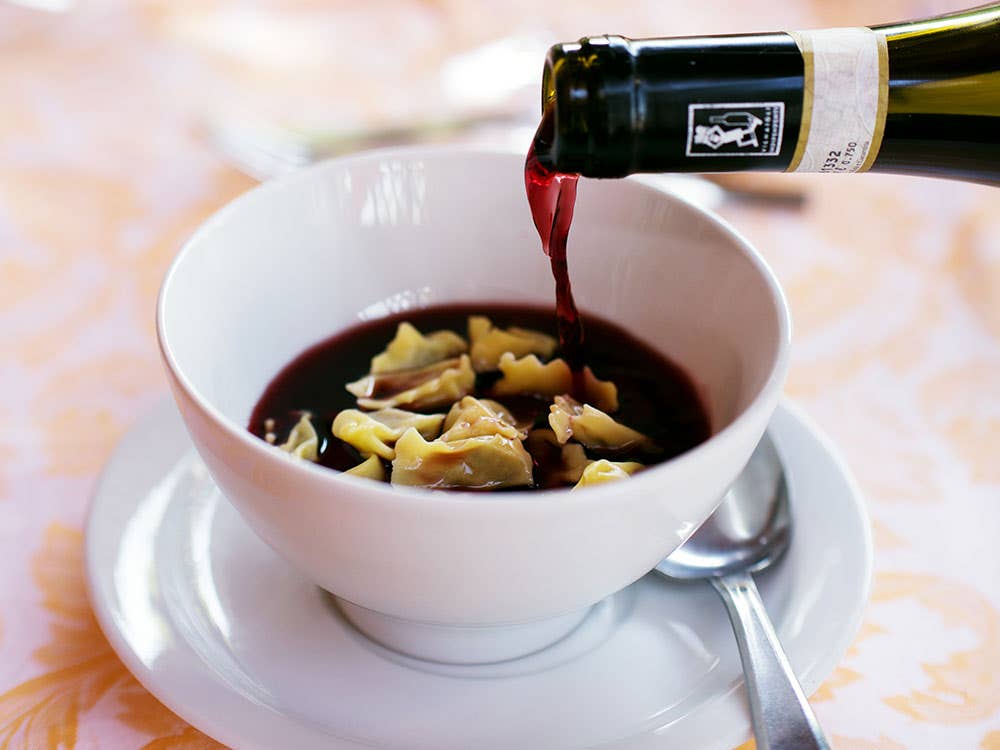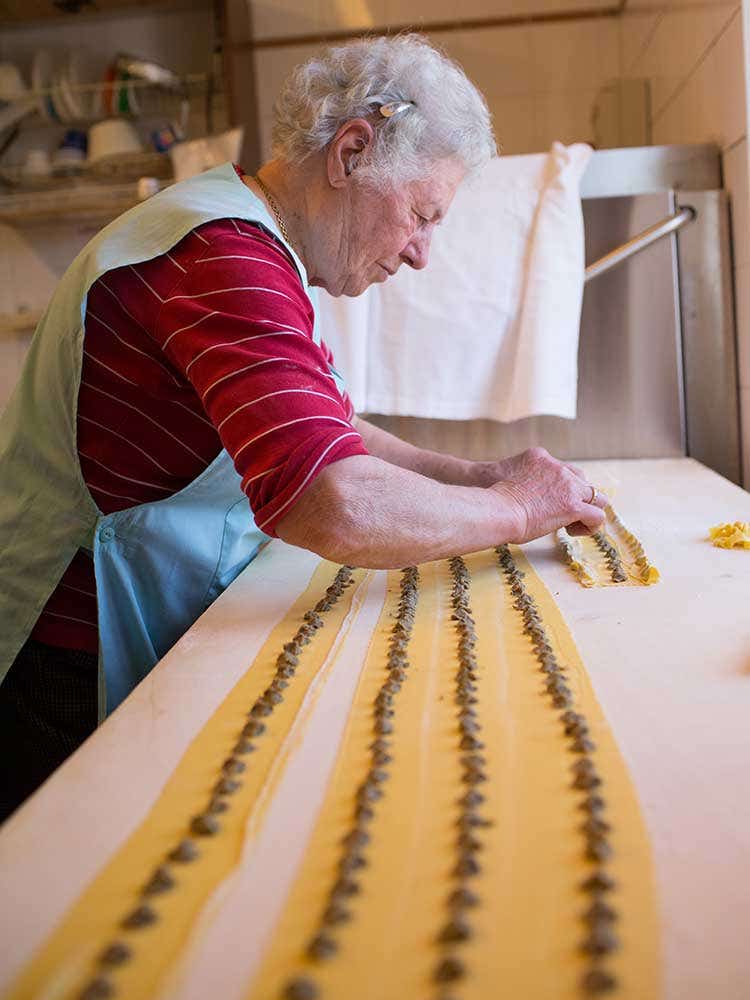
If I wanted a definitive account of the dish’s origins, I’d be disappointed, warned Piermassimo Cirio, the bespectacled, cheerful 48-year-old who manages the kitchen at Madonna della Neve, a restaurant in Piedmont’s white truffle– and wine-rich Langhe region. Pinkie-fingertip-size agnolotti del plin (from “pinch” in the local dialect), filled with meat and vegetables and sealed with a simple squeeze of thumb and forefinger, are the restaurant’s signature, and while the pasta takes many forms, I never expected it to be drowned in vino.
In 1952 Piermassimo’s parents, Renato and Francesca, purchased the restaurant, named for a small 16th-century chapel dedicated to “Our Lady of the Snow,” with which it shares a hilltop overlooking Val Bormida. Francesca, now 81, continues in the kitchen, and Renato, who grows wine grapes behind the sanctuary, is a quiet presence, reading his newspaper at a table by the bar every day during lunch service.

Agnolotti with wine isn't a Madonna della Neve invention, Piermassimo told me, rather a logical expression of the local tradition of using red wine to add flavor, richness, and calories to dishes. Piedmontese may add a splash of red to minestra—any clear broth served with a variety of tiny pasta shapes—or dip pieces of fried polenta in it. Some Piedmontese take their caffè corretto (literally "corrected coffee") with barbera instead of grappa or liqueur. "In the old days we viewed wine not only as a drink but also as a food," Piermassimo said. "The worker eating agnolotti for lunch would pour wine over the dish not to make it more luxurious, but to give himself the energy to get through the rest of the workday."
In the case of agnolotti del plin, barbera is customary. “Barolo and barbaresco are too strong; they’ll overwhelm the soft flavor of the agnolotti,” Piermassimo told me. The preference is also likely rooted in simple economics: Barolo, which must be aged at least 38 months and grown from nebbiolo grapes, is considered a wine of the rich, too dear to splash over pasta. Barbera vines are vigorous and high-yielding, and the resulting wine is drunk daily in central Piedmont, purchased by the demijohn, or grown and made at home.
At a table outdoors, Piermassimo spooned naked pasta into a bowl and brought forth an unfiltered barbera made by his father, from his own grapes. The wine was violet red, full-bodied, and just slightly sweet. But slurped from a spoon with the agnolotti, it was subdued and balanced: The tannins blossomed as they played off the pasta. I’d expected that I might find the combination jarring, strange. But it worked. Warmed by the pasta, the wine became a lush, boozy soup, its sharpness tempered by the pasta filling, which was sweet with young spring greens.
My cheeks flushed and my mind fuzzy from the warmed wine, I felt anything but energized. But then again, unlike the farmers for whom the dish was not a rare treat but fuel, my afternoon schedule included nothing more rigorous than a nap.
Keep Reading
Continue to Next Story










